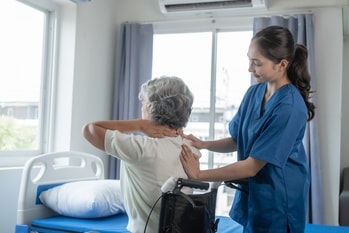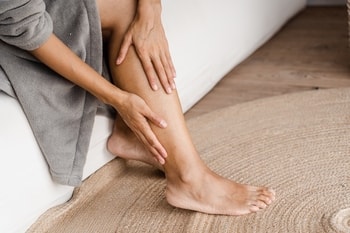
What Not to Do After Dry Needling: Essential Post-Treatment Guidelines for Optimal Recovery
Dry needling has rapidly become a popular and effective treatment modality in physical therapy and pain management. As a technique that involves the insertion of thin needles into trigger points within muscle tissue, dry needling therapy aims to relieve pain, improve range of motion, and facilitate the healing process. While the dry needling procedure is generally safe when performed by trained professionals, understanding what not to do after dry needling is crucial to ensure the treatment’s effectiveness and prevent potential complications. This comprehensive guide delves into the essential post-treatment care practices, highlighting common pitfalls to avoid and offering actionable tips for a smooth recovery.
Understanding Dry Needling and Its Benefits
Dry needling is a specialized technique used by physical therapists and other trained healthcare providers to target trigger points—specific areas within hypersensitive muscle fibers and often associated with chronic pain. By inserting thin filament needles into these trigger points, the treatment aims to elicit a local twitch response, which can lead to the relaxation of muscle fibers, increased blood flow, and reduced muscle soreness. Common dry needling techniques include in and out, pistoning, and trigger point dry needling, each tailored to address specific issues within the muscle tissue.
Many patients report immediate relief from pain following a dry needling session, making it an effective treatment for conditions such as back pain, neck pain, and sports injuries. However, adhering to proper post-treatment care is essential to maximize the benefits of dry needling treatments.
The Importance of Post-Treatment Care
The period following a dry needling session is critical for the healing process. During this time, the body works to repair muscle tissue, reduce inflammation, and restore normal function. Engaging in certain activities or neglecting recommended practices can hinder this process, leading to prolonged soreness, reduced effectiveness of the treatment, or even injury. Therefore, knowing what not to do after dry needling can significantly impact the overall success of dry needling therapy.
What Not to Do After Dry Needling
1. Avoid Strenuous Physical Activity
Intense physical activities immediately after a dry needling treatment can exacerbate muscle soreness and interfere with healing. Heavy lifting, high-impact exercises, or prolonged periods of standing or walking should be avoided for at least 24 hours post-treatment. Instead, opt for gentle movements and allow your muscles time to recover.
2. Refrain from Applying Heat Therapy Immediately
While heat therapy can promote blood circulation and ease muscle stiffness, applying heat too soon after a dry needling session can increase inflammation. It’s advisable to wait a few hours before using heat packs or a warm bath to ensure the body has adequate time to initiate healing.
3. Don’t Ignore Hydration
 Staying well-hydrated is essential after any dry needling treatment. Drinking plenty of water helps flush out toxins released during the dry needling procedure and supports the body’s natural healing mechanisms. Aim to drink at least eight glasses of water daily, and consider increasing your intake if you engage in physical activities or live in a hot climate.
Staying well-hydrated is essential after any dry needling treatment. Drinking plenty of water helps flush out toxins released during the dry needling procedure and supports the body’s natural healing mechanisms. Aim to drink at least eight glasses of water daily, and consider increasing your intake if you engage in physical activities or live in a hot climate.
4. Avoid Alcohol and Caffeine
Alcohol and caffeine can both interfere with the body’s healing processes. Alcohol is a diuretic that can lead to dehydration, while excessive caffeine intake may contribute to muscle tension and increased heart rate. To optimize recovery, it’s best to limit or avoid these substances for at least 24 hours following a dry needling session.
5. Don’t Massage the Treated Area Excessively
While gentle stretching is encouraged to maintain flexibility and support healing, massaging the treated area vigorously can irritate the muscle tissue and potentially cause more soreness. If you need to massage, opt for light, gentle movements and consult with your physical therapist on appropriate techniques.
6. Refrain from Smoking
Smoking can impede blood circulation and slow down the healing process. Nicotine constricts blood vessels, reducing the flow of oxygen and nutrients to muscle tissue. To facilitate optimal recovery after dry needling, avoid smoking for at least 24 hours post-treatment.
7. Avoiding Certain Medications Without Consultation
Some medications, particularly anti-inflammatory drugs, can affect the body’s natural response to dry needling. While reducing pain is a common goal, it’s important to discuss any medication use with your healthcare provider to ensure it doesn’t interfere with the effectiveness of the treatment or the healing process.
8. Don’t Skip Recommended Stretching if Advised
If your physical therapist has recommended specific stretching exercises following a dry needling session, it’s important not to skip them. Light stretching can help maintain the benefits of the treatment, improve range of motion, and prevent muscle tightness. However, ensure the stretching is gentle and aligns with your therapist’s guidelines.
9. Avoid Prolonged Inactivity
While rest is important, prolonged inactivity can lead to muscle stiffness and reduce the effectiveness of the dry needling treatment. Light activities like walking or gentle stretching can promote blood circulation and support recovery.
10. Don’t Ignore Signs of Complications
Most dry needling sessions have minimal side effects, such as mild soreness or bruising. However, if you experience severe pain, unusual swelling, or other concerning symptoms, it’s important to contact your healthcare provider promptly. Ignoring these signs can lead to more serious complications.
Tips for Optimal Recovery After Dry Needling
To maximize the benefits of your dry needling treatments and ensure a smooth recovery, consider the following tips:
1. Stay Hydrated
As mentioned earlier, drinking plenty of water supports the body’s detoxification process and aids in muscle recovery. Aim to maintain adequate hydration levels before and after your dry needling sessions.
2. Follow Your Therapist’s Recommendations
Your physical therapist may provide specific instructions tailored to your treatment plan. Adhering to these guidelines, including any prescribed stretching or activity modifications, is essential for achieving the desired outcomes.
3. Apply Gentle Heat After Initial Inflammation Subsides
If your therapist recommends heat therapy, apply it a few hours after the dry needling session to help relax the muscles and enhance blood flow without exacerbating inflammation.
4. Incorporate Light Stretching
Engaging in light stretching exercises can help maintain muscle flexibility and prevent stiffness. Focus on the treated areas and perform stretches gently to support the healing process.
5. Monitor Your Body’s Response
Pay attention to how your body responds after the treatment. Mild soreness is normal, but any severe or persistent symptoms should be reported to your healthcare provider.
6. Maintain a Balanced Diet
Eating a balanced diet rich in nutrients supports overall muscle health and recovery. Incorporate foods high in protein, vitamins, and minerals to aid in tissue repair and reduce inflammation.
7. Get Adequate Rest
Allow your body sufficient time to rest and recover. Quality sleep is crucial for muscle repair and overall well-being.
8. Avoid Excessive Caffeine and Alcohol
As previously noted, limiting the intake of substances that can interfere with hydration and muscle recovery is beneficial for post-treatment recovery.
Enhancing the Effectiveness of Dry Needling Treatments
 To ensure that your dry needling therapy is as effective as possible, consider the following strategies:
To ensure that your dry needling therapy is as effective as possible, consider the following strategies:
1. Maintain a Consistent Treatment Schedule
Consistency is key in managing chronic pain and improving muscle function. As your physical therapist outlines, adhering to a regular treatment plan can lead to better outcomes.
2. Incorporate Complementary Therapies
Combining dry needling with other therapies, such as manual therapy, exercise, and ergonomic adjustments, can enhance treatment effectiveness and support long-term recovery.
3. Educate Yourself About Your Condition
Understanding the underlying causes of your pain and the role of dry needling in your treatment can empower you to take an active role in your recovery process.
4. Communicate with Your Therapist
Open communication with your physical therapist ensures that your treatment plan is tailored to your specific needs and that any concerns or side effects are addressed promptly.
Conclusion
Dry needling is a powerful tool in physical therapy and pain management, offering significant relief from muscle soreness, chronic pain, and restricted range of motion. However, the success of dry needling treatments extends beyond the session itself. Understanding what not to do after dry needling is essential for maximizing the therapy’s benefits and ensuring a smooth, effective recovery.
By avoiding strenuous activities, refraining from immediate heat application, staying hydrated, limiting alcohol and caffeine intake, and following your physical therapist’s recommendations, you can support your body’s healing process and enhance the overall effectiveness of dry needling. Additionally, knowing common misconceptions and when to seek professional help can safeguard your well-being during recovery.
Partnering with a knowledgeable physical therapist and adhering to post-treatment care guidelines can improve outcomes, reduce pain, and improve quality of life. Embrace these practices to ensure your dry needling therapy works effectively, paving the way for a healthier, pain-free future.
References
https://www.physio-pedia.com/Dry_Needling
https://my.clevelandclinic.org/health/treatments/16542-dry-needling
https://www.verywellhealth.com/dry-needling-4774471


 Lip filling procedure. The usual lip augmentation can be made in your doctor’s clinic on an outpatient basis, except if you prefer a fat transfer injection since it would entail liposuction to get the fat to be
Lip filling procedure. The usual lip augmentation can be made in your doctor’s clinic on an outpatient basis, except if you prefer a fat transfer injection since it would entail liposuction to get the fat to be 


 Cost 3: Facility Fees
Cost 3: Facility Fees



